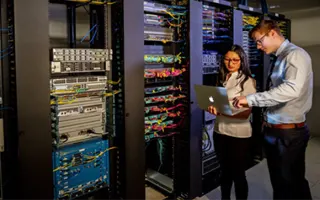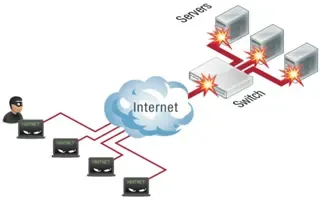Introduction To Networking
 A network is simply a group of two or more Personal Computers linked together. Many types of networks exist, but the most common types of networks are Local-Area Networks (LANs), and Wide-Area Networks (WANs).
A network is simply a group of two or more Personal Computers linked together. Many types of networks exist, but the most common types of networks are Local-Area Networks (LANs), and Wide-Area Networks (WANs).
In a LAN, computers are connected together within a "local" area (for example, an office or home). In a WAN, computers are further apart and are connected via telephone/communication lines, radio waves or other means of connection.
How are Networks Categorized?
Networks are usually classified using three properties: Topology, Protocol and Architecture.
Topology specifies the geometric arrangement of the network. Common topologies are a bus, ring and star.You can check out a figure showing the three common types of network topologies here.
Protocol specifies a common set of rules and signals the computers on the network use to communicate. Most networks use Ethernet, but some networks may use IBM's Token Ring protocol. We recommend Ethernet for both home and office networking. For more information, please select the Ethernet link on the left.
Architecture refers to one of the two major types of network architecture: Peer-to-peer or client/server. In a Peer-to-Peer networking configuration, there is no server, and computers simply connect with each other in a workgroup to share files, printers and Internet access.
This is most commonly found in home configurations and is only practical for workgroups of a dozen or less computers. In a client/server network there is usually an NT Domain Controller, to which all of the computers log on. This server can provide various services, including centrally routed Internet Access, mail (including e-mail), file sharing and printer access, as well as ensuring security across the network. This is most commonly found in corporate configurations, where network security is essential.
Wi-Fi Key Generator
Follow Firewall.cx
Cisco Password Crack
Decrypt Cisco Type-7 Passwords on the fly!
















